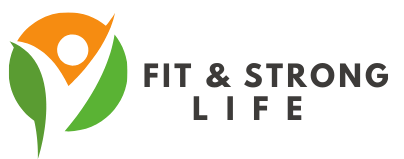In today’s fast-paced world, maintaining a fit and strong life isn’t just a luxury—it’s a necessity. The benefits of physical fitness extend beyond the obvious aesthetic appeal; they permeate every aspect of our well-being, from mental health to longevity. This blog aims to guide you through the essential components of a fit and strong lifestyle, offering practical tips and insights to help you embark on or enhance your wellness journey.
1. The Foundations of Fitness
Understanding Physical Fitness
Physical fitness is a state of health and well-being that allows you to perform daily activities with vigor. It encompasses various components:
- Cardiorespiratory Endurance: The efficiency with which the body delivers oxygen and nutrients needed for muscular activity.
- Muscular Strength: The amount of force a muscle can produce with a single maximal effort.
- Muscular Endurance: The ability of a muscle group to continue muscle movement over a length of time.
- Flexibility: The ability to move joints through their full range of motion.
- Body Composition: The ratio of fat to lean mass in your body.
The Importance of Strength
Strength isn’t just for athletes or bodybuilders. Building muscle mass and strength contributes to:
- Increased Metabolic Rate: Muscle tissue burns more calories than fat tissue, even at rest.
- Improved Bone Density: Weight-bearing exercises strengthen bones, reducing the risk of osteoporosis.
- Enhanced Functional Abilities: Everyday tasks become easier, reducing the risk of injury.
2. Crafting Your Fitness Routine
Assessing Your Current Fitness Level
Before starting any fitness program, it’s crucial to assess where you are:
- Consult a Professional: A healthcare provider or certified trainer can provide assessments.
- Set Realistic Goals: Define what you want to achieve—be it weight loss, muscle gain, or improved endurance.
Designing a Balanced Workout Plan
A comprehensive fitness plan should include:
- Aerobic Exercises: Activities like running, cycling, or swimming improve cardiovascular health.
- Strength Training: Utilize weights, resistance bands, or body-weight exercises to build muscle.
- Flexibility Training: Incorporate stretching or yoga to enhance flexibility and reduce injury risk.
- Rest and Recovery: Schedule rest days to allow your body to repair and strengthen.
Staying Motivated
- Track Progress: Keep a workout journal or use apps to monitor your achievements.
- Find a Workout Buddy: Exercising with someone can increase accountability and make workouts more enjoyable.
- Mix It Up: Vary your routines to keep things interesting and challenge different muscle groups.
3. Nutrition: Fueling Your Body
Balanced Diet Essentials
Eating a balanced diet is as important as exercising:
- Macronutrients: Ensure adequate intake of proteins, carbohydrates, and healthy fats.
- Micronutrients: Vitamins and minerals are vital for body functions.
- Hydration: Drink plenty of water throughout the day, especially before, during, and after workouts.
Meal Planning Tips
- Whole Foods: Focus on unprocessed foods like fruits, vegetables, whole grains, and lean proteins.
- Portion Control: Be mindful of serving sizes to avoid overeating.
- Mindful Eating: Pay attention to hunger cues and eat slowly.
4. Mind Over Matter: Mental Well-being
The Mind-Body Connection
Physical health profoundly affects mental health:
- Stress Reduction: Exercise releases endorphins, natural mood lifters.
- Improved Sleep: Regular activity can help regulate sleep patterns.
- Enhanced Cognitive Function: Physical activity promotes brain health.
Mindfulness Practices
- Meditation: Incorporate meditation to reduce stress and improve focus.
- Breathing Exercises: Simple techniques can calm the mind and improve performance.
5. Lifestyle Considerations
Consistency is Key
- Create a Routine: Consistency leads to habit formation and sustained results.
- Set Achievable Goals: Short-term milestones lead to long-term success.
Listen to Your Body
- Avoid Overtraining: Pushing too hard can lead to injuries.
- Seek Professional Guidance: Personal trainers or coaches can tailor programs to your needs.
6. Overcoming Common Barriers
Time Constraints
- Efficient Workouts: High-Intensity Interval Training (HIIT) can be effective in shorter durations.
- Active Lifestyle Choices: Opt for stairs over elevators, walk or cycle for short trips.
Lack of Resources
- Home Workouts: Body-weight exercises require minimal equipment.
- Community Resources: Utilize local parks or community centers.
Conclusion
Embracing a fit and strong life is a journey of self-improvement that pays dividends in all areas of your life. By combining physical activity, proper nutrition, mental well-being practices, and a commitment to consistent, sustainable habits, you set the stage for a healthier, happier you.
Remember: It’s never too late to start. Your path to fitness begins with a single step—take it today!




